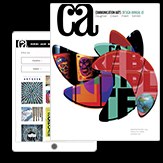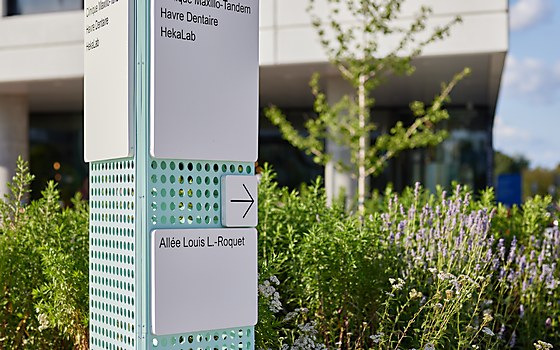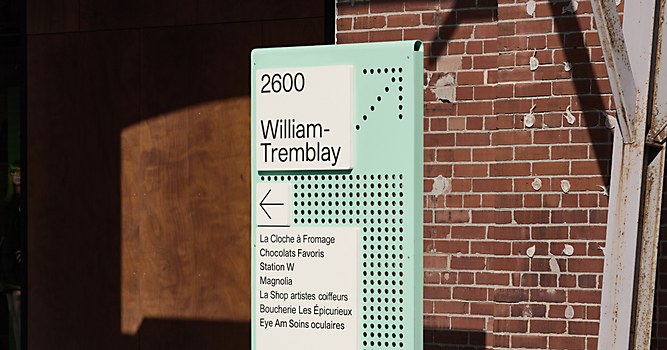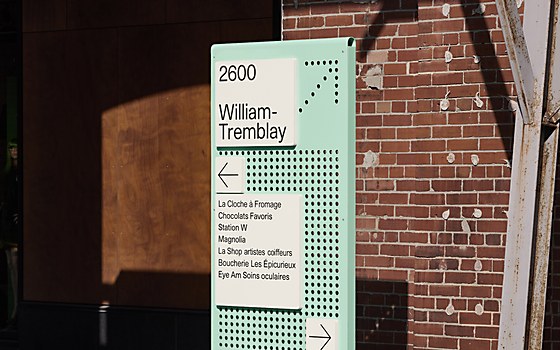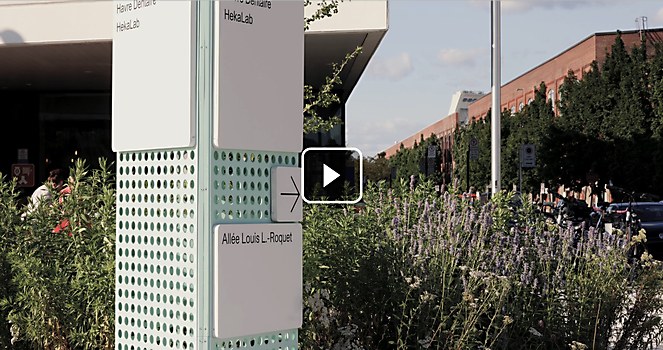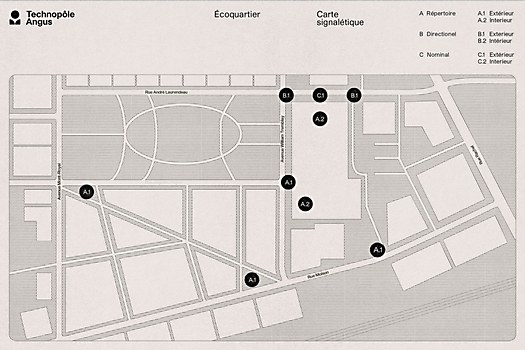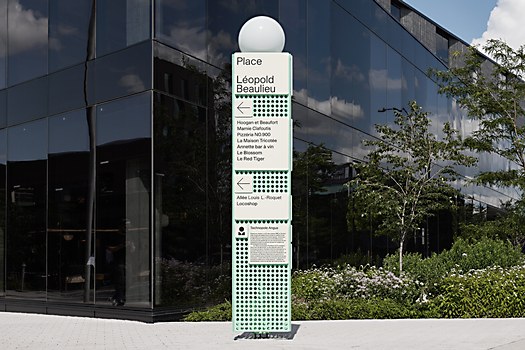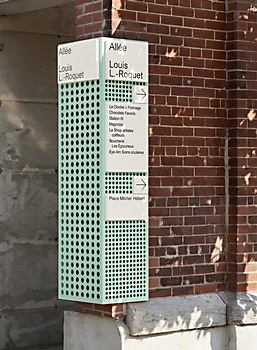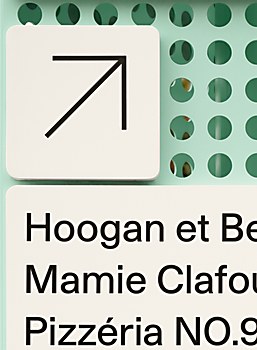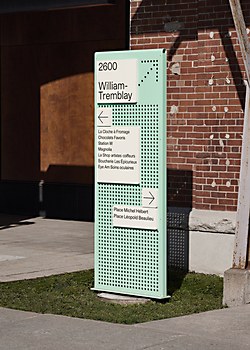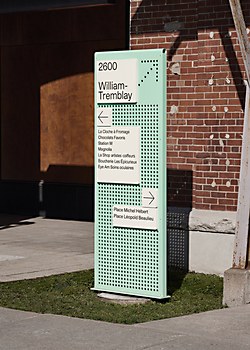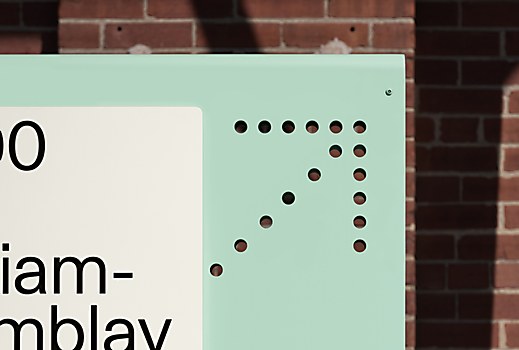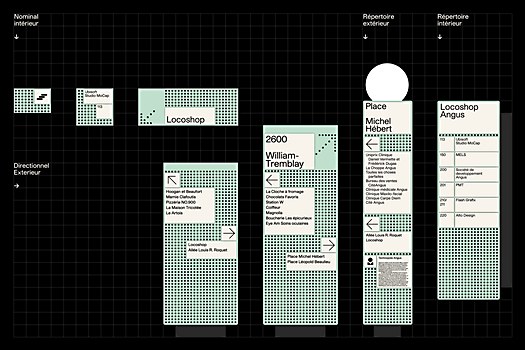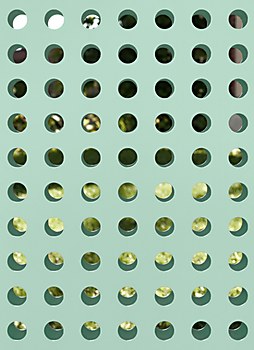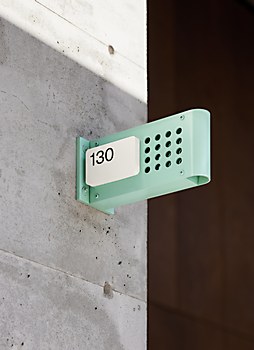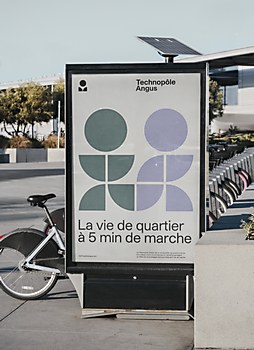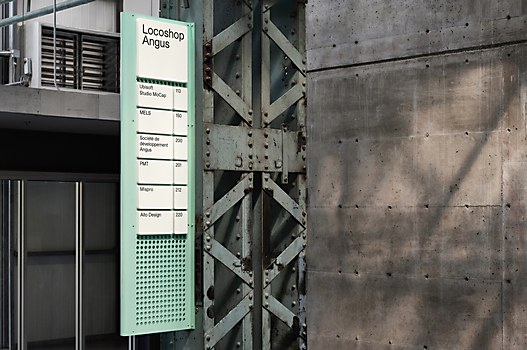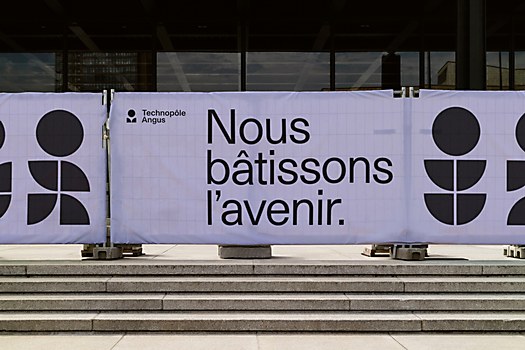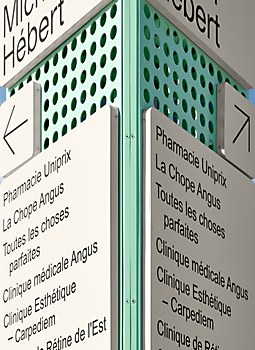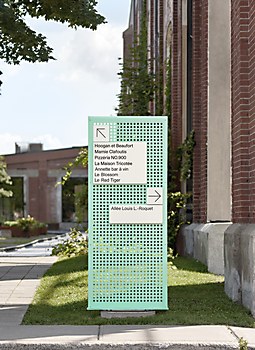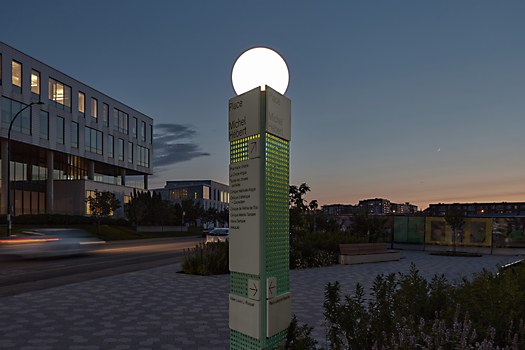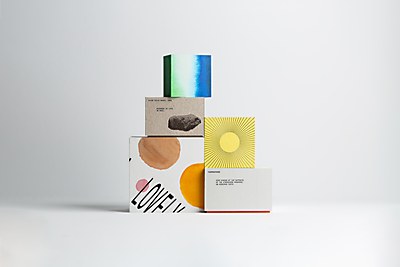Responses by LG2.
Background: Technopôle Angus, located in Montréal’s East End borough of Rosemont–La Petite-Patrie, is an avant-garde environment for businesses, workers and residents. Its industrial past as the Angus Shops left the district a unique, historical architectural legacy.
The project’s objective was to enhance the visibility of Angus Technopôle’s non–street facing businesses by creating a unique visual identity and clear signage system that directs users to points of interest and encourages them to explore the district.
Design thinking: The Technopôle’s mission is to create a living environment that both fosters community and serves as a laboratory for sustainable development. The logo evokes these twin ideas with the image of a flower that can also be interpreted as people conversing. This main symbol, consisting of a circle and two quarter shapes, can be versioned into an array of icons with endless possibilities. The complementary soft pastel palette catches the eye, and the clean, easy-to-read typography ensures people can easily find their way around the site.
The variety of strategically located, modern structures fits with the spirit of Technopôle Angus. The thoughtful choice of materials evokes the district’s history, while unusual structural details lend a distinct aesthetic character.
Challenges: We wanted the installations to be in harmony with their surroundings. The idea was to blend into the Technopôle Angus landscape and highlight the district’s industrial roots. The unexpected yet harmonious use of the patina green complements the rust and metal of the building’s industrial frame and contrasts with the typographic elements to give the information greater visibility. The perforated circles in the structures recall the large rivets of the district’s industrial buildings and echo the logo’s shape. These apertures filter sunlight and surrounding light, creating a dynamic play of shadows throughout the day. All these elements work together in a continual dialogue between the surrounding neighborhood and the signage.
Favorite details: In its industrial heyday, aluminum was widely used at the Angus Shops. Not only is the metal an important local resource—nearly 90 percent of Canadian aluminum is produced in Québec—its production has a smaller environmental impact. It was a natural fit and why we chose to use this material in our signage systems.
New lessons: To create a project consistent with the site’s heritage, we did extensive research into the history of Angus Shops and were astonished to learn just how much the culture of innovation had been present in this district since the early 1900s. The Canadian Pacific Railway had set up its largest railcar factory in North America here, offering novelties to its employees that were absolutely exceptional for the time, like cafeterias, libraries and healthcare services.
Specific project demands: The signage system had to be entirely modular to meet Technopôle Angus’s sustainable development objectives and limit the use of materials. That’s why we created plates that can be easily interchanged on the module, allowing for the addition of new businesses as it evolves.








